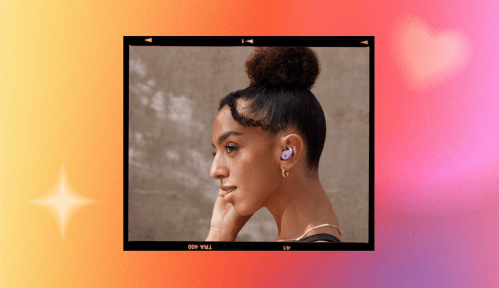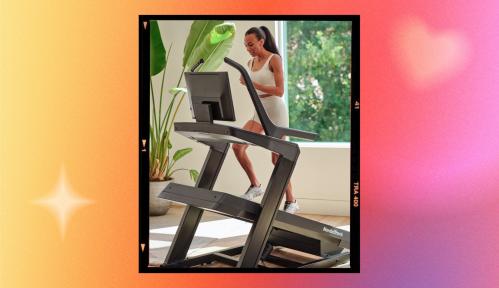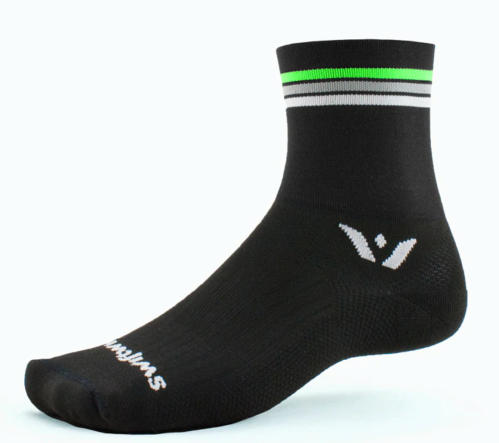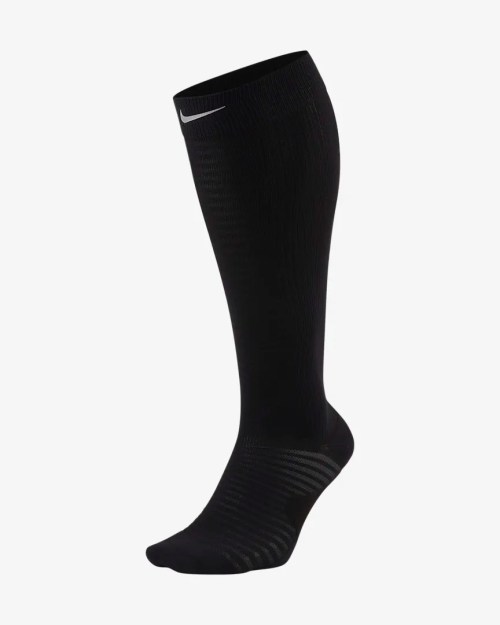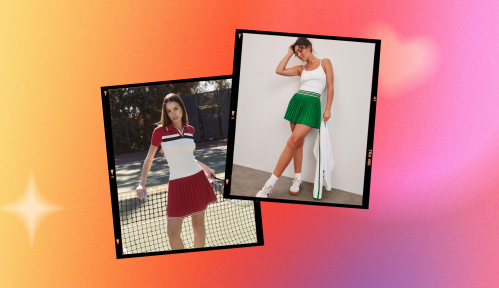Our editors independently select these products. Making a purchase through our links may earn Well+Good a commission
This Is How To Pick Out the Right Pair of Socks for Your Workout, According to a Podiatrist
Looking for podiatrist recommended workout socks? Consider these five things before purchasing your next pair.
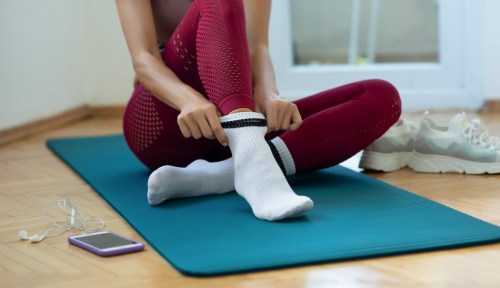
Footwear can make or break a workout. Just try going for a run in hiking boots—not only will you feel awkward (and probably much slower), but you’ll be more likely to get injured. On the other hand, if you slip on some cycling-specific shoes that clip into the pedal on your next bike ride, you’ll increase your cycling efficiency and engage your muscles more effectively than you would with regular sneakers.
Experts in This Article
board-certified podiatrist at Progressive Foot Care
Although the emphasis on fitness footwear typically revolves around shoes, thesocks you wear can also impact your workout and the comfort and health of your feet.
What should you look for in workout socks?
Dr. Bruce Pinker, DPM, a board-certified podiatrist atProgressive Foot Care and an associate of the American College of Foot & Ankle Surgeons, says it’s important to consider these six attributes of your socks.
1. Materials
It’s never fun to exercise when your feet are sweaty. In addition to feeling uncomfortable, sweat in your sock can be a breeding ground for fungi and bacteria. To combat this, look for workout socks that wick away moisture from the foot, Dr. Pinker says. “Keeping the foot relatively dry can help to reduce the occurrence of common foot conditions, such as toenail fungus (onychomycosis), warts, and Athlete’s foot (tinea pedis/ringworm).”
Dr. Pinker recommends a combination of cotton and polyester. “Ideally, socks containing 65 percent cotton and 35 percent polyester are preferred. The synthetic polyester material helps to move moisture off the foot to help keep it relatively dry,” he shares.
Other sock materials that he says can work well include rayon and nylon (both of which are synthetic), as well as silk and wool (which are natural). “Silk and wool socks can be relatively high priced, and so they may not be accessible to some. Wool socks are preferred for hiking by many hikers,” Dr. Pinker says. Wool also does a good job regulating skin temperature. Some high-end athletic socks may also have silver fibers woven into the fabric. Silver acts as an antimicrobial agent, so it can reduce odor.
And some socks even include materials that help facilitate certain movements. For example, grip socks have sticky silicone on the bottom to help provide support during dance, barre, or pilates workouts.
2. Compression
Most athletic socks provide some compression, but there are some specifically designed to provide a squeeze. Compression socks, which are often worn for workout recovery, typically extend up to just below the knee, providing graduated pressure along the lower leg that increases towards the top.
One small study involving male runners found that wearing compression socks during a 5K time trial resulted in less performance decline (and overall better performance) in a subsequent 5K time trial one hour later compared to runners who did not wear compression socks in the first 5K. The researchers surmised this improvement to be due to improved oxygen delivery, reduced muscle oscillation, and/or superior running mechanics from wearing the compression socks, as well as a potential perceived mental benefit.
Another review concluded that wearing compression socks can slightly improve time to exhaustion, running economy (including biomechanical variables), clearance of blood lactate, perceived exertion, maximal voluntary isometric contraction, and peak leg muscle power immediately after running, and decrease markers of muscle damage and inflammation.
3. Cut
The cut of the sock refers to how high it comes up beyond your foot.
- No-show socks sit below the height of a typical shoe. In general, these work well for workouts where you aren’t wearing shoes, like barre (with grips on the bottom) and dance.
- Ankle socks come up to just below the malleoli (protruding ankle bones). They can be a good choice for indoor cycling, rowing, running, and walking.
- Quarter socks extend up slightly higher above the ankle.
- Crew socks come up about six inches above the ankle, or part way up the calf. This is a popular cut for regular gym socks, trailing running, and hiking socks.
- Knee-high socks, as the name suggests, fall just below the knee. This is the typical cut of compression socks.
The appropriate sock cut can depend on the type of workout you’re doing. For example, for activities like hiking or trail running, a higher sock is often better, since it can protect your skin from ticks, prickers, and grit from the trail. Higher socks can also be beneficial for outdoor cycling, since it can keep the chain grease and road grime kicked up by the wheels off your skin.
For activities like walking, running, lifting weights, and general gym workouts, the cut is more of a matter of personal preference. If you tend to overheat, shorter socks may be preferable, but you want something that comes up past the top of your shoe—and stays in place—to avoid slippage, friction, and blisters.
4. Arch Support
Added arch support can be beneficial for people whose feet tend to feel sore or who simply like the sensation. “Arch support is not a necessity, but can add comfort,” Dr. Pinker says. “This can be found in higher-priced socks like Bombas.”
Socks with arch support can be particularly helpful for weight-bearing activities like running, hiking, walking, playing sports like tennis or basketball, lifting weights or strength training, and using an elliptical machine or stairclimber. The added compression can support the small muscles in the feet, preventing fatigue and excessive flattening of the arch upon impact.
5. Thickness
The ideal thickness of an athletic sock depends not only on the type of workout you’re doing, and also the roominess of the shoes you’re wearing. “The footwear should be snug in the width, but not tight, and there should be 3/8 of an inch from the end of the longest toe to the end of the shoe,” says Dr. Pinker.
Beyond fitting considerations, ideal sock thickness is a matter of preference. For example, many hikers and skiers prefer thicker socks for added warmth in boots. And some people prefer thicker socks with more cushion for high-impact activities like running. However, keep in mind that thicker socks are usually warmer and might not breathe as well. As Dr. Pinker says, “If the socks are very thick, it can lead to excessive perspiration, so the sock must be chosen specifically for the intended activity and fit comfortably in the desired footwear.”
What to avoid in workout socks
Dr. Pinker says to skip the old fashioned, all-cotton athletic socks: “They are not ideal and will not wick away moisture from the foot as well.”
Otherwise, the best socks for your workout is largely a matter of personal preference. If you’re finding that your current athletic socks are making your feet sweaty, hot, cold, itchy, fatigued, or prone to blisters, experiment with different brands and models until you find an option that keeps your feet feeling comfortable and dry.
Workout socks we love
Bombas Sunset Space Dye Ankle Sock 4-Pack — $54.00
A cushioned footbed and honeycombed arch support provide extra comfort. These socks feel good for the soul, too: Bombas donates one pair to homeless shelters for every pair purchased.
Stance Wool Hiking Socks — $20.00
Hit the trails in style—the crew cut will keep the dirt out of your feet, and the wool will keep your tootsies both dry and warm.

Soften the impact of your strides on your next run with the extra cushion in these socks. The no show tab cut will keep them mostly hidden, but still hit the back of your heel high enough so that they don’t slip down into your shoe.
Swiftwick Aspire Four — $16.00
Swiftwick’s most popular cycling sock is thin and breathable, but with firm compression to reduce fatigue.
Nike Spark Lightweight — $55.00
To get the benefits of over-the-calf compression on the run, these thin socks will squeeze your lower legs and keep the blood flowing.
Athleta Ankle Sock 3-Pack — $24.00
The mix of cotton and polyester in these socks wicks sweat away and has a lightweight feel that lets your feet breathe.
Oh hi! You look like someone who loves free workouts, discounts for cutting-edge wellness brands, and exclusive Well+Good content. Sign up for Well+, our online community of wellness insiders, and unlock your rewards instantly.
Sign up for the Well+Good SHOP Newsletter
Get exclusive deals on wellness, beauty, fitness, and food products that have been hand-picked by our editors.
Got it, you've been added to our email list.
